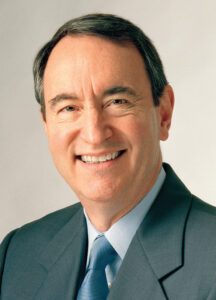Seven Words You Cannot Say On TV
Does this mean the therapy chosen for a patient’s periodontal disease will be decided by popular vote?
 A recent White House directive bars the U.S. Centers for Disease Control and Prevention from using certain words in documents being prepared for its upcoming budget; these include fetus, transgender, diversity, vulnerable, entitlement, evidence-based and science-based. According to a Washington Post report, suggested alternative phrasings to evidence-based might include “recommendations based on science in consideration of community standards and wishes.” How should clinicians interpret this part of the directive?
A recent White House directive bars the U.S. Centers for Disease Control and Prevention from using certain words in documents being prepared for its upcoming budget; these include fetus, transgender, diversity, vulnerable, entitlement, evidence-based and science-based. According to a Washington Post report, suggested alternative phrasings to evidence-based might include “recommendations based on science in consideration of community standards and wishes.” How should clinicians interpret this part of the directive?
If oral health professionals use community standards and wishes, along with science, in making clinical decisions, does this mean the therapy chosen for a patient’s periodontal disease will be decided by popular vote? I certainly hope not.
Upon further review, however, some of the statement makes sense. As has been discussed in this column, evidence-based reviews often suffer from the disturbing fact that not all studies on any particular topic have been published, especially negative ones. Therefore, when reviewers compile the evidence and report their findings, their conclusions do not necessarily present the entire picture. The consequences of not having full disclosure of all data on any subject can — and has — led to catastrophically negative results for some patients.
DOES THIS MEAN THE THERAPY CHOSEN FOR A PATIENT’S PERIODONTAL DISEASE WILL BE DECIDED BY POPULAR VOTE?
If health care providers are required to use a community standards approach, informed consent becomes an issue. Clinicians are obliged to provide enough information to allow patients to make informed decisions concerning their options for therapy. To do this, the practitioner must have access to all information on the drug, device or technique involved. So if these new rules are widely applied, are dentists required to engage patients in discussions of the “community standards” concerning the suggested therapy? And what sources define community consensus — health care workers, the popular press, companies with commercial interests in the product, religious groups or the government?
For a number of reasons, I believe that at least one portion of the “evidence-based” trend has been overutilized in dentistry. A key reason, as stated above, is the lack of complete data. Another is the use of systematic reviews and meta-analysis. The authors of these papers spend extraordinary time and energy compiling this data. However, due to the lack of heterogeneity of the studies, they can rarely reach valid conclusions. This means clinicians must still rely on individual articles in peer-reviewed journals to reach conclusions.
Dental researchers devote great effort to publishing scientifically accurate data. Is this data always correct? No. It is gathered, written and refereed by humans, all of whom have their own ingrained biases. Despite all efforts to be neutral, human biases will always be present. However, to simply throw away our existing, although admittedly flawed, approach to include nonscientific material would not serve our patients as well as our current methodology.
In short, health care professionals need to inform patients and make therapeutic decisions based on science and clinical experience, not community standards and wishes.
From Decisions in Dentistry. March 2018;4(3):6.


